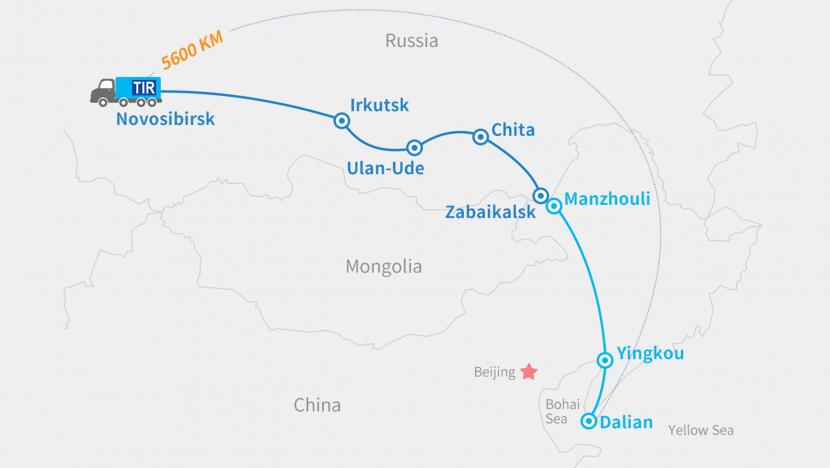China Joins TIR Convention, Opens up Borders to International Trucking
Chin a has finally signed up to the Convention on International Transport of Goods Under Cover of TIR Carnets (“TIR Convention”; TIR stands for “Transports Internationaux Routiers” or “International Road Transports”), a multilateral treaty that streamlines administration for international road transport. This brings the total number of signatories to the TIR to 74, including 73 states and the EU.
a has finally signed up to the Convention on International Transport of Goods Under Cover of TIR Carnets (“TIR Convention”; TIR stands for “Transports Internationaux Routiers” or “International Road Transports”), a multilateral treaty that streamlines administration for international road transport. This brings the total number of signatories to the TIR to 74, including 73 states and the EU.
The occasion was marked yesterday at a ceremony in Dalian, one of six TIR-ready Belt and Road gateways. The TIR will enhance interconnectivity between countries across the region and improve transportation along the routes.
“TIR has been a long time coming and will significantly improve transport logistics across China and the Belt and Road Routes,” said Chris Devonshire-Ellis, founder and chairman of Dezan Shira & Associates. He continued, “It paves the way for huge investment opportunities in trucking logistics, maintenance, and facilities for drivers across the Eurasian region.”
The TIR Convention is an international customs transit system to move goods:
- in sealed vehicles or containers;
- from a customs office in one country to a customs office in another country;
- without time or labor intensive border checks at intermediate borders.
The Convention achieves the above while at the same time providing customs authorities with the mechanisms required for security and guarantees.
In addition to road transit, the TIR system accommodates customs by road, rail, inland waterway, and maritime transit as long as part of the transport is conducted by road.
The TIR ceremony in Dalian was concluded with an inaugural truck journey from Dalian to Manzhouli on the China-Russian border, before heading by road to Chita, Ulan Ude, Irkutsk and Novosibirsk in Western Siberia, a distance of some 5,600km.

Russia and China agreed to establish the Primorye 1 Transport Corridor last year, which opens up landlocked Heilongjiang to Vladivostok Port on Russia’s east coast. The new TIR system will enable both Russian and Chinese drivers to use the route uninterrupted. The new system also allows for much needed trucking via Mongolia, with a vastly improved transit trucking activities on the Tianjin-Ulaan Baatar-Ulan-Ude route.
The use of TIR by China has the potential to increase the total trade volume among China and other Belt and Road countries by up to USD 13.6 billion, representing 1.4 percent of China’s total volume of trade exports. The activation of TIR will see Chinese goods going global with greater efficiency, while foreign imports will be faster and safer. The development illustrates China’s commitment to developing new international routes and open borders, and the two-way opening up of international road transport.
China Briefing is written by Dezan Shira & Associates. The practice provides essential market intelligence, legal, tax, and on-going advisory and administrative services to foreign investors throughout Asia, including China, India, the ASEAN nations, and Russia, and has done so since 1992. Please contact the firm at asia@dezshira.com or visit our website at www.dezshira.com
- Previous Article China, US Suspend Trade War
- Next Article Comment Pékin facilite les affaires

























